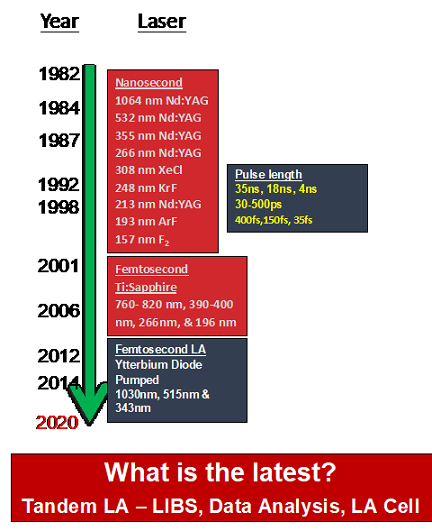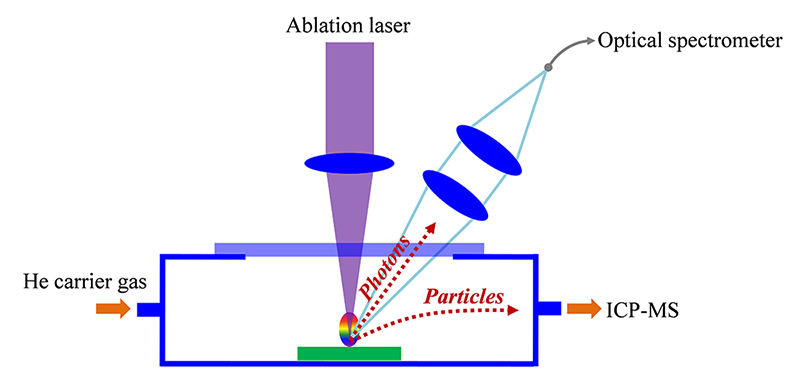Technical Webinar: A Brief History of Laser Ablation in Spectroscopy
Update! Due to the high demand of interest, we are opening up 2 more sessions.
2nd Session:
For attendees who are in Asia, South East Asia and Australia:
Webinar date and time:
Thursday, 4/16/2020, 5:00 PM to 6:00 PM, PST Duration 1:hr.
3rd Session:
For anyone who may missed the 1st session. Please register the below site.
Friday, 4/17/2020, 8:00 AM to 9:00 PM, PST Duration: 1hr.

It’s now over 35 years since Alan Gray used a ruby laser to ablate pelletized rock samples for subsequent online analysis into an ICP-MS. The available technology both in terms of lasers and associated ICP mass spectrometers have changed a lot in that time.
Thursday, April 16, 2020 8:00 AM PST – 9:00 AM PST
Duration: 1 hour
Webinar Presenter: Dr. Steve Shuttleworth
This webinar will look at how the laser ablation technology for ICP-MS has evolved since its inception by considering the major technological advances that have resulted in improved detection power and an improved level of quantitation. The laser technology for solid sampling has advanced over last two decades and today the users have a wide range of laser choice to cover different wavelengths and pulse widths for optimum analytical performance. In recent times, the solid state lasers with proven reliability are increasingly used in many industrial QC/QA analysis. For highly transparent sample analysis (as in geochemistry analysis), the excimer gas laser has become a popular choice of wavelength. Furthermore, there is a growing interest in using ultrashort pulse lasers for performing more sensitive and precise LA-ICP-MS measurements. It is important to consider laser wavelength and pulse width and absorption of the laser light by a given sample matrix in consistently producing, transporting, and analyzing particles that are more representative of the sample chemistry.

Other areas of LA technology such as ablation cell design and data processing approaches and available software tools have also had a large impact on the capability of laser ablation and will also be discussed.
Finally, the concept of the Tandem LA-LIBS technology, more advanced form of LA instrumentation that incorporates LIBS (Laser Induced Breakdown Spectroscopy) will be discussed in terms of how this advanced LA instrument platform expands not only the elements that can be analyzed but also how it expand the dynamic range of the combined instrument.

Finally, the concept of the Tandem LA-LIBS technology, more advanced form of LA instrumentation that incorporates LIBS (Laser Induced Breakdown Spectroscopy) will be discussed in terms of how this advanced LA instrument platform expands not only the elements that can be analyzed but also how it expand the dynamic range of the combined instrument.
| Who may benefit from this webinar: – Those that are getting into LA-ICP-MS field and wants to understand the history and evolution of LA instrumentation – Users of LA instrument for ICP-MS/OES who wants to enhance the impact of wavelength and pulse duration on analytical performance – Those who wants to understand the latest advance in the LA instrumentation including cell technology and analysis software – Those who wants to add to include lighter and organic elements such as C, H, O, N, F, etc to LA-ICP-MS analysis (via Tandem LA – LIBS) |

